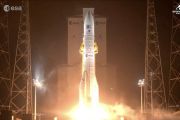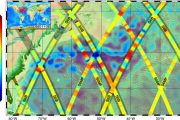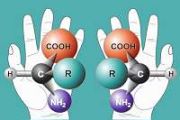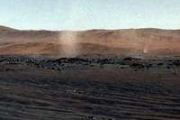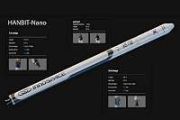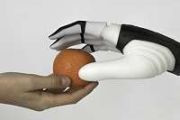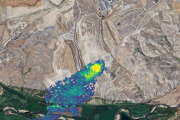
Copernical Team
Jovian vortex hunter catalog reveals stunning insights into Jupiter's atmosphere
 The Jovian Vortex Hunter project has released a groundbreaking catalog of 7,222 atmospheric vortices on Jupiter, showcasing immense swirling storms captured over the last two years. Each vortex represents a powerful atmospheric phenomenon within the gas giant's turbulent skies, with thousands of volunteers contributing to this unprecedented effort.
Vortices are categorized by color, with "
The Jovian Vortex Hunter project has released a groundbreaking catalog of 7,222 atmospheric vortices on Jupiter, showcasing immense swirling storms captured over the last two years. Each vortex represents a powerful atmospheric phenomenon within the gas giant's turbulent skies, with thousands of volunteers contributing to this unprecedented effort.
Vortices are categorized by color, with " First integration of European reusable stage demonstrator Themis
 ArianeGroup has successfully completed the initial mechanical integration of Themis, the European reusable launcher first stage demonstrator, at its Les Mureaux facility in France.
Standing 28 meters tall, the prototype comprises the Multi-Engine Bay (MEB), tanks, the Flight Control Bay (FCB), and the upper segment that completes the stage structure.
The Themis demonstrator will be p
ArianeGroup has successfully completed the initial mechanical integration of Themis, the European reusable launcher first stage demonstrator, at its Les Mureaux facility in France.
Standing 28 meters tall, the prototype comprises the Multi-Engine Bay (MEB), tanks, the Flight Control Bay (FCB), and the upper segment that completes the stage structure.
The Themis demonstrator will be p UT researchers secure $17.8M grant for cutting-edge hypersonic wind tunnel
 Researchers from the University of Tennessee, Knoxville, have been awarded a $17.8 million grant by the U.S. Air Force to construct a hypersonic wind tunnel at the UT Space Institute in Tullahoma, Tennessee. The facility will test advanced materials, such as high-temperature ceramics, under the extreme conditions of hypersonic flight - speeds exceeding Mach 5, or five times the speed of sound.
Researchers from the University of Tennessee, Knoxville, have been awarded a $17.8 million grant by the U.S. Air Force to construct a hypersonic wind tunnel at the UT Space Institute in Tullahoma, Tennessee. The facility will test advanced materials, such as high-temperature ceramics, under the extreme conditions of hypersonic flight - speeds exceeding Mach 5, or five times the speed of sound. SwRI to develop magnetometers for NOAA's Space Weather Next Program
 NASA and the National Oceanic and Atmospheric Administration (NOAA) have awarded Southwest Research Institute (SwRI) a $26 million contract to design and build advanced magnetometers for the Space Weather Next (SW Next) program. These instruments will play a key role in two missions slated for launch in 2029 and 2032, providing critical measurements of the interplanetary magnetic field transport
NASA and the National Oceanic and Atmospheric Administration (NOAA) have awarded Southwest Research Institute (SwRI) a $26 million contract to design and build advanced magnetometers for the Space Weather Next (SW Next) program. These instruments will play a key role in two missions slated for launch in 2029 and 2032, providing critical measurements of the interplanetary magnetic field transport China Mission unveils revival of Lunar magnetic field on far side of Moon
 Rock samples collected by China's Chang'e-6 lunar probe from the moon's far side have unveiled key insights into the evolution of the lunar magnetic field.
Published in the journal Nature, the analysis of these samples reveals an unexpected resurgence in the moon's magnetic field strength 2.8 billion years ago, following a significant decline around 3.1 billion years ago. This discovery ch
Rock samples collected by China's Chang'e-6 lunar probe from the moon's far side have unveiled key insights into the evolution of the lunar magnetic field.
Published in the journal Nature, the analysis of these samples reveals an unexpected resurgence in the moon's magnetic field strength 2.8 billion years ago, following a significant decline around 3.1 billion years ago. This discovery ch NASA schedules heliophysics missions for September 2025 launch
 NASA and SpaceX have announced a revised target of September 2025 for the launch of the Interstellar Mapping and Acceleration Probe (IMAP) spacecraft. The updated schedule allows for additional time to complete final preparations for the IMAP flight systems ahead of its launch aboard a SpaceX Falcon 9 rocket.
IMAP's primary mission is to study the heliosphere, a protective magnetic bubble
NASA and SpaceX have announced a revised target of September 2025 for the launch of the Interstellar Mapping and Acceleration Probe (IMAP) spacecraft. The updated schedule allows for additional time to complete final preparations for the IMAP flight systems ahead of its launch aboard a SpaceX Falcon 9 rocket.
IMAP's primary mission is to study the heliosphere, a protective magnetic bubble Unveiling hidden stars in the Milky Way with stellar orbital mapping
 A research team led by the Leibniz Institute for Astrophysics Potsdam (AIP) has pioneered a method to reconstruct the Milky Way's structure by mapping the orbits of stars. This approach reveals a deeper understanding of the galaxy's evolution and the distribution of stellar populations.
Despite advances in observational astronomy, much of the Milky Way remains hidden due to the obscuring e
A research team led by the Leibniz Institute for Astrophysics Potsdam (AIP) has pioneered a method to reconstruct the Milky Way's structure by mapping the orbits of stars. This approach reveals a deeper understanding of the galaxy's evolution and the distribution of stellar populations.
Despite advances in observational astronomy, much of the Milky Way remains hidden due to the obscuring e SpaceX launches 21 Starlink satellites from Florida
 Shortly after midnight on Monday, SpaceX launched a new round of 21 Starlink satellites into lower Earth orbit, 13 of which can contact cell phones directly.
The Falcon 9 rocket blasted off from the Kennedy Space Center in Florida at 12:35 a.m., EDT. The first stage, making its 15th trip, landed safely on the drone ship "Just Read the Instructions" about eight minutes after the launch.
Shortly after midnight on Monday, SpaceX launched a new round of 21 Starlink satellites into lower Earth orbit, 13 of which can contact cell phones directly.
The Falcon 9 rocket blasted off from the Kennedy Space Center in Florida at 12:35 a.m., EDT. The first stage, making its 15th trip, landed safely on the drone ship "Just Read the Instructions" about eight minutes after the launch. Lab experiments explore origins of gullies on Asteroid Vesta
 The rugged surface of asteroid Vesta, studied extensively by NASA's Dawn mission, features craters and mysterious gullies whose formation has puzzled scientists. These deep channels, previously hypothesized to result from debris flows driven by meteoroid impacts and temperature changes, are now thought to involve a surprising factor: brief flows of water.
A recent NASA-funded study, publis
The rugged surface of asteroid Vesta, studied extensively by NASA's Dawn mission, features craters and mysterious gullies whose formation has puzzled scientists. These deep channels, previously hypothesized to result from debris flows driven by meteoroid impacts and temperature changes, are now thought to involve a surprising factor: brief flows of water.
A recent NASA-funded study, publis Webb Telescope detects new population of small Main Belt Asteroids
 The James Webb Space Telescope (JWST) has expanded its role in solar system research, revealing a previously undetectable population of small asteroids within the main asteroid belt between Mars and Jupiter.
A team from the Massachusetts Institute of Technology (MIT) used Webb's observations of the star TRAPPIST-1 to identify 138 new asteroids ranging in size from a bus to a stadium. These
The James Webb Space Telescope (JWST) has expanded its role in solar system research, revealing a previously undetectable population of small asteroids within the main asteroid belt between Mars and Jupiter.
A team from the Massachusetts Institute of Technology (MIT) used Webb's observations of the star TRAPPIST-1 to identify 138 new asteroids ranging in size from a bus to a stadium. These 
